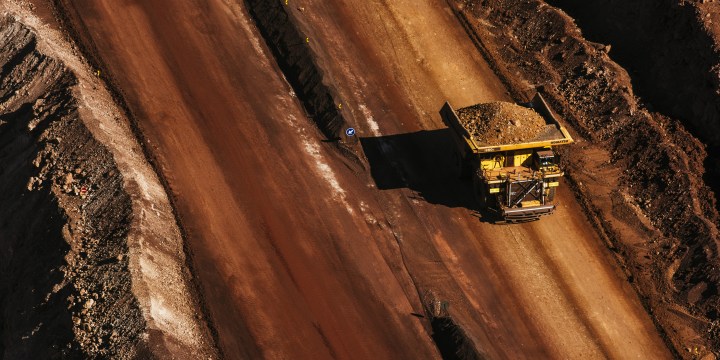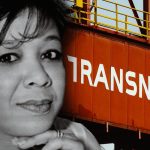BUSINESS REFLECTION
Loaded for Bear: For better or worse, the ‘beneficiation’ of minerals is back on the African agenda

‘Minerals beneficiation’ is back on the South African and wider African mining agenda. While the goal of adding value to mineral resources is laudable, it is a farce if you can’t even keep the lights on.
The word “beneficiation” hardly rolls off the tongue, and its usage is limited. The Oxford English Dictionary says it has “0.09 occurrences per million words in modern written English”, a rarity which perhaps explains why I have yet to find a spellcheck that recognises it.
But in South Africa, it is used rather more frequently, and for better or worse, it is back on the agenda.
Depending on the source consulted, the term broadly refers to the process of treating ore to prepare it for smelting. Some take it further and see it as “adding value” to mineral products beyond the material that emerges from the smelter.
In South Africa, it has been “beneficiated” to a grade where it means that rather than exporting platinum group metals (PGMs), you build catalytic converters here. Or an entire car from scratch.
President Cyril Ramaphosa raised the subject when he delivered the ANC’s annual 8 January statement in Mbombela on Saturday, saying the party’s youth league had made it clear that “we are tired of being a country that exports all our mineral resources… without beneficiating them. And they have said ‘please let us beneficiate our minerals’.”
Ramaphosa was providing a summary of the statement, which – surprisingly – did not use the word “beneficiation”.
“…. too many of our natural resources are still exported in raw form and then imported back into South Africa as manufactured goods. The jobs and profits involved in manufacturing these goods are passed on to other countries, yet we need these here in South Africa,” it reads.
New scramble for Africa
We’ve heard this routine before. But it is now being performed on a stage featuring a new scramble in Africa for the “critical minerals” and “green metals” needed for the energy transition. And it has a regional cast.
Finance Minister Enoch Godongwana told me in a brief interview last week that critical minerals would be high on his radar at this week’s annual World Economic Forum shindig in Davos.
The minister said he had a planned meeting his counterparts from the DRC, Zambia and Zimbabwe to discuss a regional critical minerals strategy.
“We need to cooperate with them in such a manner so that we, together, influence the direction… in terms of development,” Godongwana said.
“The use of these minerals must be done in SADC.”
There are merits to this strategy. Africa is the world’s poorest continent, a reflection, in part, of the fact that it is also the least industrialised.
Yet the region also boasts fabulous mineral and hydrocarbon wealth which it has mostly failed to translate into wider prosperity, a state of affairs dubbed in some circles as the “resource curse”.
One plausible way to break the spell is to process the extracted commodities further instead of exporting the raw material and then use it to build stuff here.
Zimbabwe is blazing a path of sorts and was an example Godongwana pointedly mentioned to me.
Zimbabwe banned the export of raw lithium – a crucial battery metal for electric vehicles – in 2022 in a bid to curb artisanal mining and extract more value. If you want to invest in a Zimbabwean lithium project, you need to pony up for some processing as well.
So, how’s that going?
Well, Reuters reported in November that Zimbabwe earned $209-million from lithium exports in the first nine months of 2023, nearly triple the previous year’s earnings.
This is because Chinese companies have spent more than $1-billion during the past two years in Zimbabwe’s lithium space to develop projects, including some processing.
Zimbabwe is still not quite at the stage where it’s building EVs.
According to Reuters, most of the Chinese companies involved “have built processing plants… and are shipping lithium concentrates to China for further processing.”
Still, adding some value presumably creates some jobs while spurring “industrialisation”.
And the region may be in a position to make “beneficiation” demands of investors.
Minerals ‘super region’
Research group Wood Mackenzie recently produced a white paper exploring the idea of creating a “minerals super region” comprising Africa, the Middle East, Central Asia and South Asia, saying it “would make a huge contribution to a successful energy transition.”
It underlined the point that Africa’s potential on this front was “unrivalled”.
“… in terms of the minerals essential for a successful energy transition, Africa is a clear global leader. With 79% of global cobalt reserves, 44% of global manganese and 21% of global graphite as well as sizeable resources of many other minerals including copper and tin, the continent’s potential is unrivalled,” Wood Mackenzie says.
This gives African governments some leverage to dictate the terms of investment into the region’s critical minerals at a time when potentially critical shortages are seen looming.
Wood Mackenzie estimates that “approximately $400-billion in capital expenditure is required for mining, refining and smelting of critical minerals by 2030 to bridge the supply-demand gap and limit global temperature increases to 1.5°C above pre-industrial levels.”
But Africa is constrained by, well, its relative lack of industrial capacity, making the whole “beneficiation” and “industrialisation” debate a bit of a chicken-and-egg scenario. Which needs to come first?
“Africa’s undeveloped financial ecosystem, underdeveloped infrastructure and a reluctance to invest in many African countries, means that the continent has provided strong headwinds,” Wood Mackenzie notes.
South Africa, with its relatively developed financial ecosystem and infrastructure, and its significant reserves of critical minerals such as manganese, should be the best-placed country in the region to benefit from any beneficiation drive linked to the energy transition.
De-industrialising
But South Africa is de-industrialising and losing its capacity to make stuff – or to “beneficiate”.
The power and logistics crises have forced the country’s largest steel maker, ArcelorMittal South Africa, to shut down its long steel operations.
So, the likes of Kumba Iron Ore will see an already small domestic market for their product evaporate, leaving exports as their only option. But Kumba has had to curtail production for export because it can’t move all its product to port by rail in the face of Transnet’s meltdown.
As my colleague Ray Mahlaka has noted, policy blunders by the Department of Trade, Industry and Competition – such as a new preferential pricing system for scrap, a 20% export duty, and a ban on scrap exports – have also undermined intensive steel operations.
The ANC statement also said: “Our manifesto will outline industrial policy measures to ensure more of what is consumed by us is produced by us.”
This is the same ANC whose policies have led to de-industrialisation, while its shoddy governance has caused power and logistics failures.
You also need to extract minerals before you “beneficiate”, and the Department of Mineral Resources and Energy can’t even seem to finalise mining rights applications.
At this rate, South Africa in a few years will be lucky if it can process ore Zimbabwe-style to ship to China for further processing. And the factory jobs will remain in China. DM
Loaded for Bear is a new weekly column by Ed Stoddard.
















 Become an Insider
Become an Insider
Yip, infrastructure gone, skills gone. Soon the ANC will be doing more desperate things to keep the Titanic afloat and get kickbacks. Its the same with tenders and local content – a big lie to charge more. The factory is a just a front and 90% is still manufactured in China.
Don’t you need power, electricity, water, good logistics and a skilled workforce for raw material benefication….. let alone huge investments.
I 100% back the concept of beneficiation in SA and the region – but as has been pointed out for years, without power, logistics and predictable regulations, you’ll struggle to get investors willing to buy in.
That said, it’s changing and it’s exciting to see the massive investments (relatively) in much of the region in power, logistics and opening up regulatory systems to encourage local processing of minerals. Oh, except in South Africa. Thanks, Gwede the Treasonous!